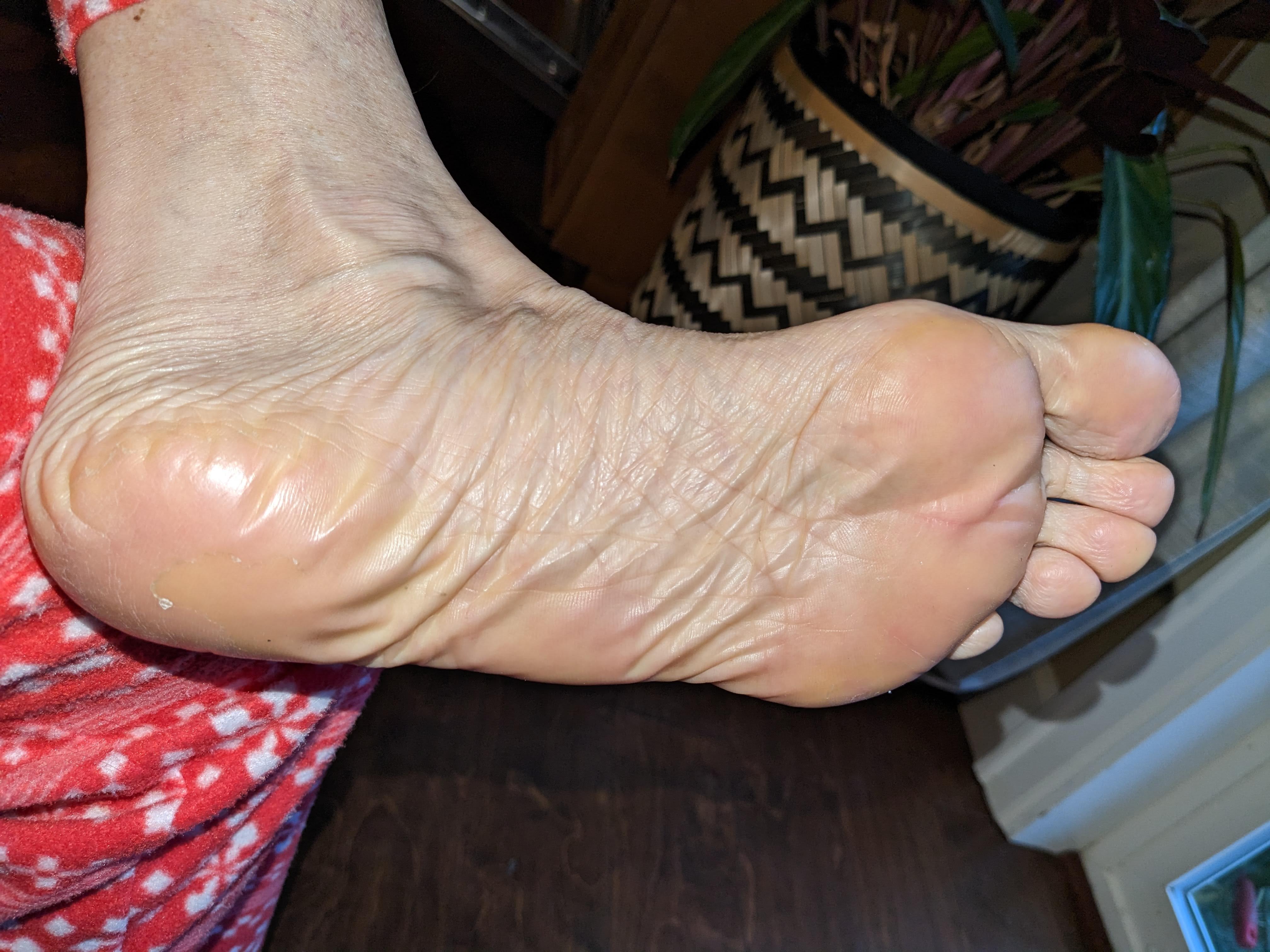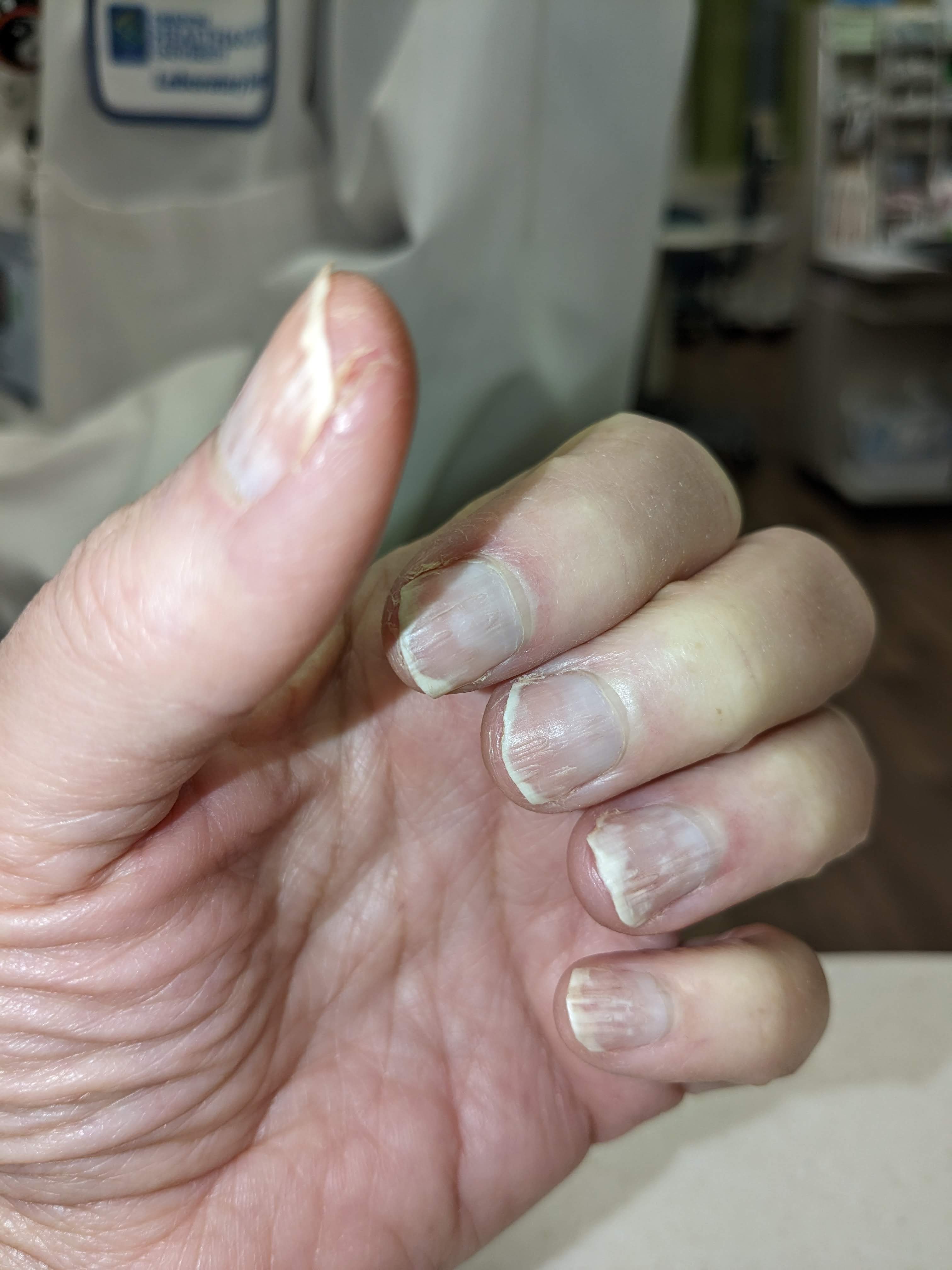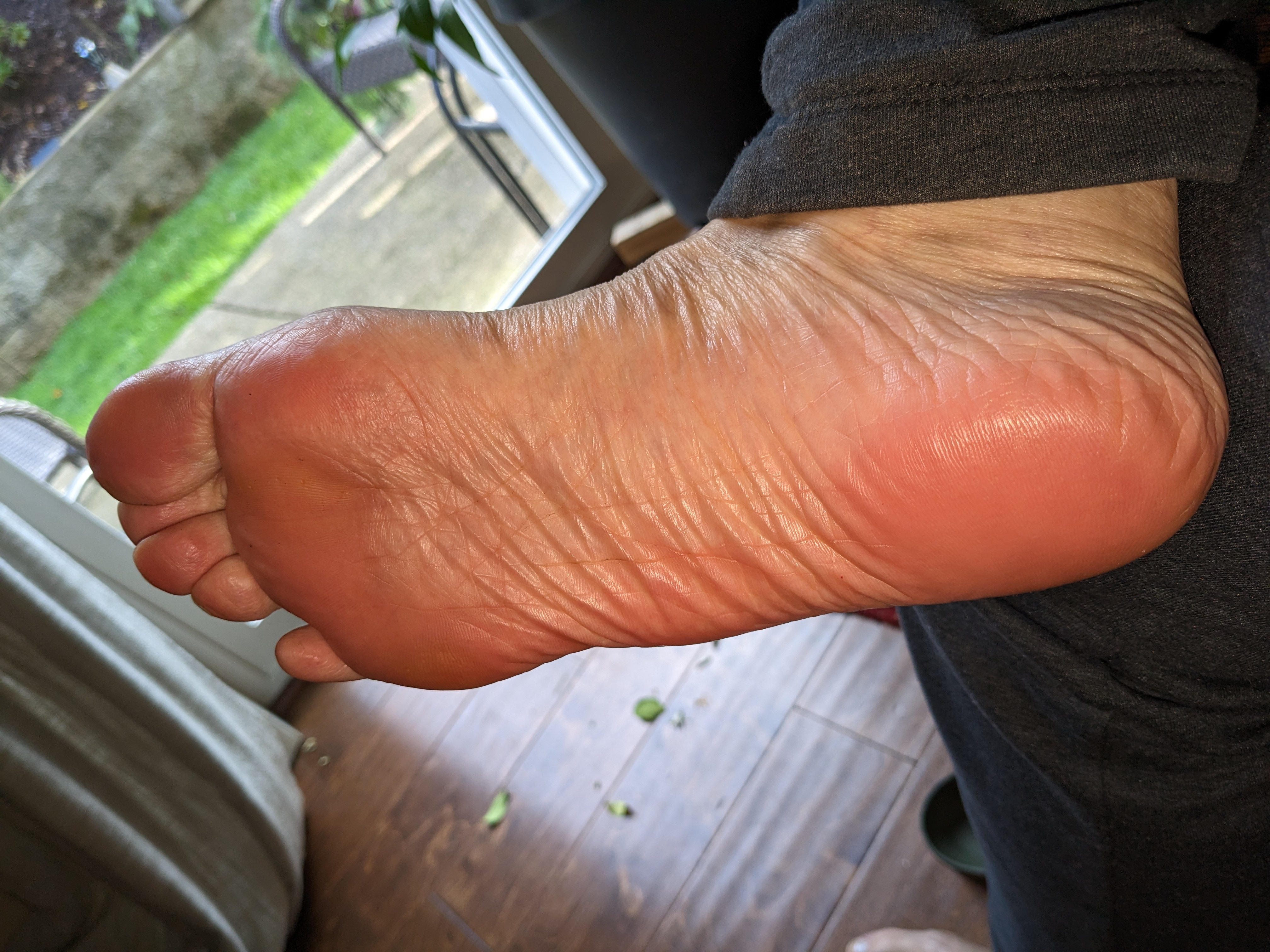Chemotherapy Skin Side Effects: 10 Helpful Tips for Managing Chemo Skin Side Effects
Posted by Theresa Keresztes on Jan 19th 2023
Top 10 Tips for Managing Chemotherapy Side Effects: Hand-Foot Syndrome and Skin Care During Chemotherapy
Hand-foot syndrome (HFS), also known as palmar-plantar erythrodysesthesia (PPE), is a common side effect of certain chemotherapy drugs. This condition causes a painful burning or tingling sensation in the hands and feet, leading to discomfort, reduced dexterity, and balance issues. In more severe cases, the skin can crack, peel, blister, or even bleed, making daily tasks such as cooking, folding laundry, or opening bottles quite challenging.
While this can be a distressing experience, HFS also signals that chemotherapy is targeting fast-growing cells and that the drug’s toxicity is building up in the dense capillaries of the hands and feet.
Typically, symptoms of HFS appear within the first few weeks of chemotherapy, and it’s important to consult your oncologist to explore ways to alleviate discomfort. Solutions such as thick, soft socks, skin care products, and other comfort aids can help you maintain your daily routine while managing skin care during chemotherapy.
Chemotherapy Medications That Can Cause HFS:
- Anthracycline antibiotics
- Cytarabine
- Docetaxel
- Capecitabine (or 5-fluorouracil)
- Doxorubicin
Managing Symptoms During Chemotherapy Cycles
Below are some effective strategies for managing hand-foot syndrome and continuing activities you enjoy. Recognize the Symptoms of HFS:
- Redness, swelling, and irritation on the palms and soles
- Pain, tenderness, or heightened sensitivity
- Blisters, peeling, or cracked skin
- Tingling, numbness, or loss of sensation
Protect Your Hands and Feet:
- Wear gloves when performing household chores or handling hot objects.
- For special occasions, consider using fake nails, and remove them gently before your next skin check with your oncologist.
Use Gentle Cleansers:
- Avoid harsh soaps, cleansers, or products that may irritate your skin. Stay clear of solvents like mineral oil and turpentine, which can sting and worsen irritation.
Soak in Epsom Salt:
- Soak your hands and feet in a cool water Epsom salt bath for about 10 minutes each evening. This will help to soften the skin, reduce bacteria, and prepare it for moisturizing.
Cool Down:
- If you live in a cooler climate, walk barefoot on cold floors to soothe your feet. For warmer climates, enjoy the coolness of tile or stone floors. Cooling sheets and open windows at night can also provide relief.
Apply Barrier Creams:
- Use a urea-rich, thick moisturizing barrier cream twice daily to protect and heal irritated skin. Choose a moisturizing cream for chemotherapy patients that helps with skin hydration and healing. Avoid rubbing or scrubbing your hands and feet and wear loose-fitting clothing and socks to minimize friction.
Stay Hydrated:
- Drink plenty of water throughout the day. Proper hydration helps keep your skin moisturized from within, supporting overall skin health during chemotherapy.
Exercise with Care:
- If high-impact exercises are too painful, consider low-impact activities like swimming, yoga, or cycling. When symptoms subside during “off-cycles,” light jogging or walking may be an option.
Invest in Soft, Thick Socks:
- Wear thick, soft socks and change them daily after applying your skin care products. Look for socks designed for sensitive skin or those specifically made for chemotherapy patients to cushion and protect your skin.
Wear Comfortable Shoes:
- Choose supportive, comfortable shoes like those from brands like Hokas and OOFos, which offer sneakers, walking shoes, sandals, and other footwear styles that are gentle on your feet. Consider slip-on or Velcro shoes to avoid discomfort from tying laces.
Consult Your Oncologist:
- Always inform your oncologist and oncology nurse if you experience skin side effects. They can provide personalized recommendations or adjust your treatment plan to manage discomfort while helping you maintain daily activities.
Recommended Skincare Products for Chemotherapy Patients:
For optimal skin care, apply a urea-rich, thick moisturizing barrier cream like MARI-GOLD Barrier Cream twice daily to your hands and feet, in the morning and evening. This will help to heal and protect your skin, allowing you to continue low-impact activities and maintain mobility throughout your treatment.
Key Features to Look for in Skincare Products:
- Hydrating creams for chemotherapy patients
- Urea-based moisturizers for skin repair
- Barrier creams to prevent further irritation
Important Reminder: Always consult with your healthcare team, including your oncologist and oncology nurse, for personalized guidance on managing chemotherapy side effects. They can recommend the best skincare products and strategies based on your individual needs and treatment plan.
Week 4 - Start of Xelodo.

Week 16 - My Girls Barrier Cream applied twice daily.




